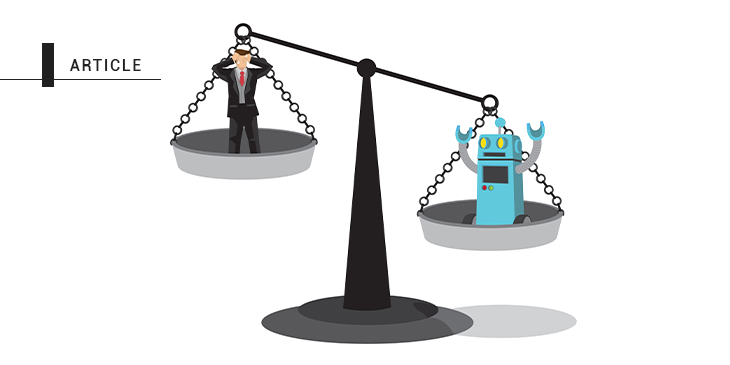What happens when automation and outsourcing go toe-to-toe?
Outsourcing is a cost-savings approach that was cemented during the first industrial revolution. The idea was to create more output for less capital by fulfilling mass production efforts where labor costs are lower (i.e. abroad).
As we enter the age of automation, the next industrial revolution will be a digital one. Now, it’s technology leading the labor charge and enticing businesses with its cost-effectiveness and streamlined supply chains.
What can we expect as supply chains continue to shift and which model will pay off in the long run?
The pros and cons of offshoring
There are plenty of reasons offshoring has persisted for centuries, but principally it’s thanks to the labor cost reducing and profit-boosting benefits.
But for as much good as outsourcing can do for a business’ bottom line, the practice still gets some heat. TecHQ explains, “Besides the financial impact, companies are increasingly concerned about national security and ESG (environmental, social and governance) issues; aspects including high carbon footprints often associated with long supply chains and conflicting employment practices.” Communication barriers and cultural misunderstandings also come at a high cost.
How COVID-19 affected BPOs
By some accounts, business process outsourcing (BPO) is an oft-overlooked victim of the global pandemic. Multinational law firm MinsterEllison offers this example: “Following lockdown orders in the Philippines and India, most BPOs – caught between mobility curbs and client security obligations that prevent work-at-home scenarios – were unable to meet contracted service levels.”
Simultaneously, the majority of companies realized they could economically absorb a variety of once-outsourced functions under a remote work model, further decreasing its hold on the global supply chain.
The pros and cons of automation
For many organizations, automation is the automatic choice. It’s widely known to increase productivity, quality and efficiency, tackle remedial and repetitive tasks, reduce lead times and decrease human error while improving safety.
Automation is widely known to increase productivity, quality and efficiency.
In the minus column, it’s the human part of that “human error” piece that most folks get stuck on. The emotional and economic fallout an employee faces after being displaced by a machine is tough to overlook. But if you can get past the initial expense of investing in automation technology, have the dedicated maintenance and skilled workforce to operate it and are ok being more dependent on tech, automation can really pay off.
Why automation comes out ahead
Robotic process automation (RPA) is “a term given to a virtual machine that takes over some of the applications and workflows managed by workers,” according to Computer World.
Also described as “an enabler of innovation,” RPAs work 24/7/365, something even the most lax international labor laws can’t compete with. This can offer your customers perks like a personalized customer service experience any moment of the day, any day of the year. And you’ll save money by doing it.
The more carefully you evaluate and thoughtfully you implement automation, the easier the transition will be.
According to Deloitte, “While an outsourcing provider may deploy onshore and offshore resources at different price points post-build, a robot can cost 10 to 20 percent the cost of an onshore full-time employee in high-cost locations like the United States.”
In terms of accuracy, efficiency and scalability, RPAs are untouchable, making the case for automation difficult to discredit.
For those that do ultimately decide to lean into the future and automate their workplace, a word to the wise: You don’t have to do so all at once. The more carefully you evaluate and thoughtfully you implement automation, the easier the transition will be. Even necessary evolutions can be gradual.
Content created and provided by ONEAFFINITI.












